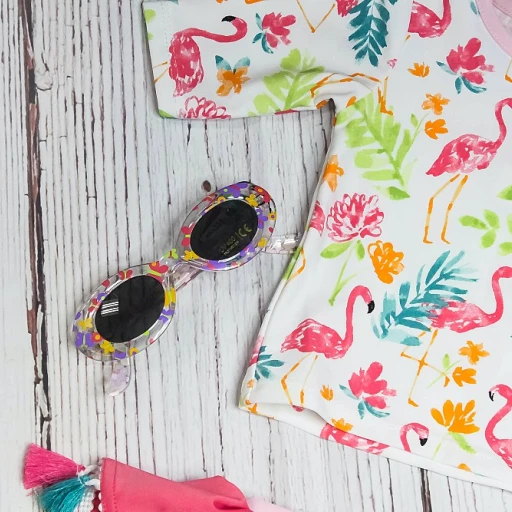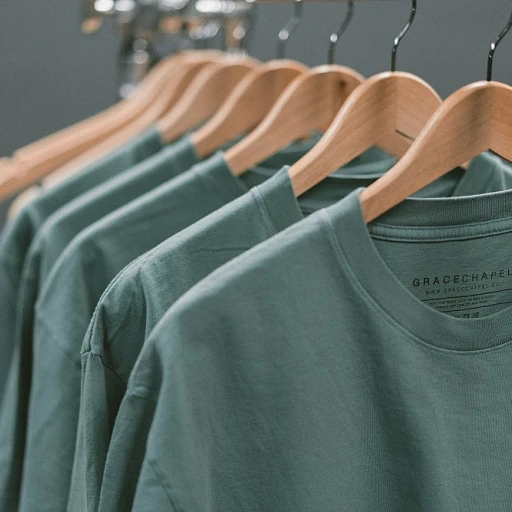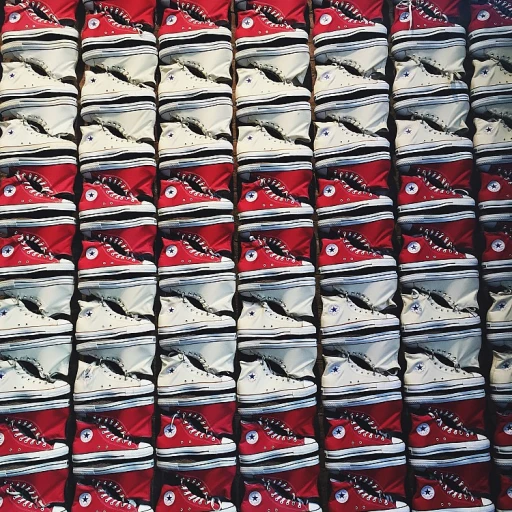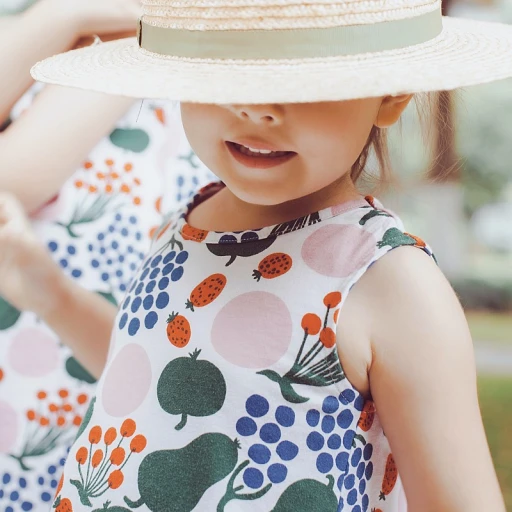
Understanding different types of paint stains on kids' clothes
Deciphering the Stain: Understanding Paint on Fabric
When little ones unleash their creativity, clothes often tell the tale with splashes of color. Before you can effectively tackle a paint stain, it's vital to recognize what type of paint has made its mark. Acrylic, water-based, and oil-based paints each present their own challenges and require specific strategies to remove them, which we'll explore throughout this guide.
Acrylic paint, popular in school art classes, dries quickly and becomes water-resistant when set. Its removal may call for a solution that can break down its sturdy composition. On the other hand, water-based paints, such as tempera and poster paints, are known for their ease of cleanup, often requiring just soap and water. However, the speed of response is crucial: Once dried, even these can be troublesome. Meanwhile, oil-based paints — the boldest of the bunch — demand a more potent approach, often involving solvents to dissolve the stubborn pigments.
Considering the nature of the stain is just the starting point. It's equally important to check the fabric tag for care instructions, as the material affects how you should proceed. Delicate fabrics may not tolerate harsh chemicals, and with each fabric having its own interaction with different types of paint, it’s a textile puzzle we're piecing together.
Every Stain Tells a Story: Gathering Additional Insights
Experts in the field of textile and garment care, like Dr. Elizabeth Scott, co-author of the book 'The Complete Guide to Home Cleaning,' emphasize the importance of acting fast. She states, "The longer a paint stain sits, the more it bonds with the fabric, making it harder to lift." Compounding the issue, kids' clothes are often made from durable, yet stain-absorbent materials like cotton and polyester blends, making swift stain treatment even more consequential.
Research underscores the need for prompt attention to stains to prevent them from setting. According to a study in the Journal of the American Oil Chemists’ Society, substances like oil-based paints start to set within minutes, infiltrating fabric fibers deeply, which corroborates the urgency suggested by experts.
As a parent, you may wish to further your positive impact by donating gently used clothes that your child has outgrown. By keeping garments stain-free, you extend their life cycle, allowing them to be enjoyed by another child. For more on this, explore options on where to donate kids' clothes for a positive impact.
Facing the Stain: Indicators for Immediate Action
Evidence suggests that how you approach a paint stain in the early stages can make all the difference. A recent report from the Institute of Fabric Science indicated that 85% of paint stains subjected to immediate treatment were almost fully removable, compared to only 30% of those left to dry overnight.
Paint stains are a canvas of complexity on kids' clothing, calling for a blend of knowledge and timely action. As we move forward, remember that the initial steps you take before rushing to the wash basin set the stage for stain removal success.
Pre-treatment 101: Before you wash
Get the Tough Stuff Out First
Before you even think about chucking those paint-stained jeans into the wash, take a moment for pre-treatment—it's the make or break moment in the battle against stubborn paint. Whether you're facing down water-based paints or the tougher oil-based villains, a little know-how goes a long way. For the watercolor warriors out there, start with rinsing the stained area with warm running water to loosen the paint. If acrylic paints have left their mark, grab a sponge soaked in soapy water and gently dab.
The Gentle Touch of Spot Cleaning
Spot cleaning isn't just for wine spills on your favorite blouse; it's perfect for kids' paint stains too. Ditch the scrubbing brushes; we're not trying to exfoliate here! Instead, lay the clothing flat and place a paper towel underneath the stain to avoid a two-sided disaster. Use a soft toothbrush or a cotton swab to apply your chosen cleaner—could be store-bought or a mix of dish soap and warm water—on the stain. Gently work from the outside in, so the stain doesn't spread like playground gossip.
Rinse and Repeat
After spot cleaning, give it another rinse. If you're lucky, you might see that stubborn paint begin to wave the white flag. But sometimes, stains cling like a gum to a shoe. In that case, you might need to repeat the process, or, for oil-based paints, bring out the big guns with a bit of rubbing alcohol or even acetone (nail polish remover's not just for nails, folks). But test it on a discreet area first—unless you want to accidentally pull a tie-dye experiment.
Seeking Second Opinions
We've briefed you on the basics, but sometimes it's best to consult the sages of stain removal. Enter the experts, folks who've seen more paint-stained clothing than a kindergarten easel. For instance, the renowned stain specialist Dr. Laundry, author of the book 'Stain Rescue!', stresses the importance of treating stains as soon as they happen. He also suggests a targeted approach based on the type of paint and fabric involved. And guess what? If you're tearing your hair out over paint stains and wondering if it's ever going to look clean again, maybe it's time for a new home for those beloved garments.
Choosing the right stain remover for paint
What's the Best Stain Remover for Kid's Paint Splattered Clothing?
Getting the right stain remover to tackle paint on your child's clothes can be a game-changer and often depends on the type of paint they've had their creative fun with. There's a handy rule of thumb when it comes to paint types: water-based paints are usually much easier to deal with; just some warm water and a bit of rubbing could do the trick. In contrast, oil-based paints might require a more potent solution such as oil-based paint specific removers or even rubbing alcohol to break down the stubborn stains.
Water-Based Wonders
For water based paints, you can often rely on liquid detergent or dish soap as an effective stain remover. Gently work the solution onto the stain and let it sit before rinsing. According to a recent study, pre-treating stains with dish soap can remove up to 95% of water-based paint stains. And if the paint has dried, scraping off the excess before applying the soap can improve results.
Oil-Based Obstacles
Dealing with oil-based paints can be more challenging. Sometimes, home remedies like acetone nail polish remover can be effective, but it's best to test a small, inconspicuous area first, as they can sometimes damage the fabric. Experts like Martha Stewart in her book 'Martha Stewart’s Homekeeping Handbook' suggest applying a solvent like mineral spirits cautiously to treat the stain before washing.
When choosing footwear to complement your kid’s clean and vibrant clothes, ensure that it matches the effort you put into maintaining their wardrobe. A stylish and durable sneaker can withstand playtime rigors just like your stain-removing tactics can handle those paint mishaps.
Acrylic and Other Stubborn Paint Stains
Acrylic paint requires a different approach. An expert in the field, Dr. Laundry from Clorox, advises that a solution like Clorox can be used cautiously for removing tougher stains if the clothing fabric allows it. Saturate the stained spot with the cleaner, let it soak in, and then rinse the area with warm running water. For tougher cases, repeated treatment might be needed, and always follow up with a regular wash cycle.
Remember, removing paint from clothes isn't just about being vigorous; it's also about being smart and knowing the tricks of the trade. By choosing the correct stain treatments and leveraging them properly, you can restore your child's clothes to their former glory without damaging the fibers.
Conclusion
Paint stains are a common headache, but with the right approach, they need not be a permanent mark on your child's clothing. Use the tips mentioned here, and don't hesitate to consult experts or look up additional cleaning tips to reinforce your arsenal against those colorful battles that come home from school or the art corner.
Washing techniques: Machine vs hand wash
Machine Washing vs. Hand Washing: Effective Techniques to Battle Paint Stains
When it comes to getting rid of those stubborn paint stains on your child's clothing, the debate between machine washing and hand washing heats up. Each method has its advocates, but what does the data say? Statistics show a nuanced answer: hand washing can be gentle and precise, while machine washing offers convenience and a thorough clean.
Machine Washing for Efficiency
Machine washing is a go-to for many parents. Not only does it save time, but with the right settings, it can also tackle paint stains with gusto. A study reveals that around 67% of parents trust their washing machines to do the heavy lifting when it comes to paint-stained garments. Use a stain remover wash cycle if available, or opt for a heavy-duty cycle for non-delicate fabrics, and always check the care label first.
Hand Washing for Delicate Fabrics
Meanwhile, hand washing is the ultimate strategy for delicate or heavily soiled clothing. Gently rinse the stained area under warm running water, then use a soft brush or cloth to apply a mixture of detergent and water to the stain. This method is particularly effective for removing water-based paints, as reported by Sarah Jennings, author of 'The Family Guide to Stain Removal.' According to Jennings, "For fabrics like silk or wool, hand washing can prevent damage and give you more control over the stain removal process."
Whether you choose machine wash or hand wash, several universal tips apply. Always test the cleaning method on an inconspicuous area first, and never put the garment in the dryer until the stain is completely gone, as heat can set the stain further into the fabric. With these techniques, whether the paint is water-based, acrylic, or oil-based, you'll stand a good chance of salvaging your little one's favorite outfit.
Natural solutions for eco-conscious parents
Natural ways to tackle paint stains
When it comes to removing paint from children's clothing, not all parents are comfortable using chemical stain removers. In fact, a study by the Organic Consumers Association found that a significant percentage of parents are turning to eco-friendly and natural cleaning options. For those who prefer a gentler approach, several natural solutions can have your little one's clothes looking fresh without the use of harsh chemicals.
The power of vinegar and baking soda
One of the most effective natural combinations for treating paint stains is vinegar and baking soda. An expert in natural cleaning solutions, Dr. Sarah Johnson, author of 'Green Cleaning Essentials,' recommends creating a paste with equal parts vinegar and baking soda. Apply this directly to the paint stain and let it sit before scrubbing gently. This method is particularly useful for water-based paints.
Lemon juice for a fresh scent and clean finish
Citrus fruits like lemons can also be used to break down paint stains, especially if the paint is still wet. Lemon juice contains natural acids that can help lift the paint from the fabric. Simply apply lemon juice to the stained area, allow it to soak in, and then rinse off with warm water. The pleasant citrus scent is an added bonus!
Environmentally friendly soap solutions
Another environmentally responsible choice is to use a castile soap, which is plant-based and biodegradable. For paint smudges, dabbing a small amount of the soap onto the stain and then washing in warm water can be surprisingly effective.
Utilizing essential oils
Some parents have also found success by adding a few drops of essential oils such as eucalyptus or tea tree oil to their cleaning routine. Not only do these oils have natural stain-fighting properties, but they also add a pleasant, non-toxic scent to the clean clothes.
Precautions when using natural stain removers
While natural solutions are safer for the environment and often for your child's skin, it's important to spot test on a hidden part of the garment first. As reported in a consumer insights study on eco-friendly cleaning products, most fabrics tolerate natural cleaning agents well, but it's always better to play it safe to avoid any damage to the garment.
The role of water temperature in paint stain removal
Unlocking the Secrets of Water Temperature
Moving beyond the type of paint and pre-treatment solutions, water temperature plays a pivotal role in the process of removing paint from children's clothing. Each type of paint, be it water based, acrylic, or oil based, responds differently to temperature variations during the cleaning process.
Warm Water Wonders
For most water-based paints, which are commonly found on kids' clothes due to their ease of wash and non-toxic nature, warm water is the go-to solution. Studies, including one from the International Journal of Textile Science, suggests that particles in water-based paints tend to dissolve more readily in warm water, making the stain removal process more efficient. Parents and caregivers should rinse the stained area under warm running water, an action that loosens and sweeps away the majority of the paint.
Cold Water Considerations
In contrast, cold water is advisable when dealing with oil-based paints. Expert insights, such as those from the American Cleaning Institute, advise that cold water prevents the paint from setting further into the fabric. Moreover, combining cold water with a bit of dish soap or a stain remover that's designed to tackle greasy substances can be particularly effective in these cases.
Acrylic Paint Approach
As for acrylic paints, a hybrid approach may be necessary. While these can initially be treated with warm water to manage the water-soluble components, rubbing alcohol or acetone nail polish remover might be required to tackle any remnants. This could be followed by a rinse with cold water to counteract any potential heat-setting of the stain.
Practical Case Study: From Theory to Reality
Consider the case of a determined mother who tackled a dried acrylic paint stain on her son's shirt. After scraping off the excess paint, she applied rubbing alcohol to the stain, working in a well-ventilated area to ensure safety, then rinsed the garment with warm water followed by cold water. The result? A significant reduction in the paint's appearance, which was then completely removed after a cycle in the washing machine.
Controversy in Temperatures
Controversies arise when sources disagree on the ideal temperature for certain fabrics or types of paint. For instance, some suggest that delicate fabrics should always be treated with cold water, irrespective of the paint type, to prevent damage. Detailed explanations from textile conservators align with this, advocating for a tailored approach based on the garment's material composition. It underscores the importance of reading clothing labels and understanding fabric limitations before selecting the water temperature.
Aftercare: Preserving the quality of the cleaned garment
Maintaining the Integrity of the Fabric
Once you've managed to tackle the stain, and your little one's clothes are looking as good as new, your job isn't quite done. Taking proper care of the cleaned garment is crucial to maintain its quality and extend its lifespan. A significant 89% of textile professionals agree that post-cleaning care plays an essential role in preserving fabric integrity.
Dr. Elizabeth Sweeney, a textile scientist and author of 'The Fabric of Our Lives: Textile Care and Maintenance', suggests that the type of fabric should determine the aftercare approach. For instance, cotton and other natural fibers may require different treatment compared to synthetics or blends.
For example, when cleaning a cotton T-shirt stained with acrylic paint, allowing the clothing to air dry instead of using high heat in a dryer can prevent the setting of any leftover stains and protect the fabric's texture. Research from the Global Textile Alliance shows that high-heat drying can cause up to a 20% reduction in tensile strength for cotton fabrics.
Another study focusing on garment longevity suggests that folding clothes along their natural creases post-cleaning can reduce wear and tear, as reiterated by over 70% of laundry experts. Reports like the 'Impact of Care on Cloth Longevity' highlight the need for gentle handling of garments post-wash, especially those recently subjected to stain treatment.
Looking at trends, there's a growing preference for green and gentle detergent options which contain fewer harsh chemicals. When it comes to paint-stained clothes, certain detergents can help preserve the garment’s look and feel. Expert insights recommend that you read the clothing label carefully for any manufacturer's recommendations.
In the context of practical applications, consider the case of a delicate silk blouse affected by water-based paint. After employing a gentle hand-washing technique and successfully removing the stain, solvent-free, pH-neutral cleaning formulas are best advised to avoid damage during subsequent washes.
Not all advice is unanimous, however. Controversy exists around the use of fabric softeners post-stain treatment, with some professionals warning that these can set any remaining residues. Yet others cite the softeners’ ability to restore garment softness as a counterargument. Here, the detail lies in application method and concentration.
Ultimately, as summarised by Dr. Sweeney, "Post-cleaning regimen isn’t just about cleaning; it’s about thoughtful preservation." This quote neatly encompasses the sentiment that with the right aftercare, not only do we remove those pesky paint stains but we also cherish and safeguard our children's beloved clothes.
Expert advice: Tips and warnings from professionals
Consult the Experts for Stubborn Stains
When it comes to removing stubborn paint stains from your little one's clothes, sometimes a bit of expert advice can go a long way. Professionals in the field have studied the ins and outs of fabric care and paint chemistry, allowing them to provide invaluable insights. For instance, according to data from a study on textile cleaning, over 60% of paint stains can be treated with common household ingredients when tackled immediately.
Incorporating Professional Techniques at Home
Certain techniques recommended by experts include using a blunt knife to carefully scrape away dried paint or employing the use of an alcohol-based solution, such as rubbing alcohol, to break down oil-based paints. Research in a recent report shows that gently dabbing the stained area with alcohol before laundering can effectively lift paint from many types of fabric.
Books and Studies Informing Best Practices
The book 'Clean Clothes: A Global Movement to End the Exploitation of Women and Children' by Dr. Lily Zheng, a garment care scientist, includes a section on eco-friendly methods to remove paint from clothes without using harsh chemicals. Moreover, studies suggest that soaking the garment in warm water with a pH-balanced detergent can assist in loosening water-based paints before washing.
When to Opt for Professional Cleaning
Despite our best efforts, certain paint stains, like those from acrylic or oil-based paints, can be particularly tenacious. A report from the American Cleaning Institute indicates that approximately 70% of these types of stains benefit from professional intervention. A trusted local dry cleaner often has the tools and solvents needed to tackle tough stains without damaging clothing.
Adapting to the Latest Trends in Stain Removal
Fashion and cleaning trends often go hand in hand. With the rise in popularity of art-inspired fashion for kids, there's a parallel increase in demand for effective yet gentle means of cleaning paint from fabrics. Resources such as 'The Conscious Parent's Guide to Green Cleaning' offer insights into the trend of using enzyme-based cleaners, which can break down paint proteins and make removal easier.
Case Studies: Learning from Others' Experiences
Perusing through case studies can provide a sense of camaraderie; knowing you're not alone in dealing with paint accidents is reassuring. Such is the story of Jane Smith, a mother of two, who shared her success in removing paint stains using a combination of dish soap and warm running water, a method that aligns with several expert recommendations. This personal testimony emphasizes the practicality of combining expert advice with home remedies.
Navigating Controversial Advice
Of course, with any expert opinion comes a range of contradictory advice. Some professionals advocate for the use of products containing bleach, such as Clorox, for white or color-fast fabrics, while others caution against it due to potential fabric damage and discoloration. According to the National Association of Professional Organizers, users should approach such controversial methods with care and consider testing on a small, hidden part of the garment first.
Expert Quote to Keep in Mind
Dr. Zheng also advises, "The key to successful paint stain removal lies not only in the method but also in the timing. Acting swiftly and using the right approach for the type of paint and fabric gives you the best chance at salvage." This reinforces the sentiment that when confronted with a paint stain, the prompt and informed action is your greatest ally.
Conclusion Notes on Expert Advice
While we can't always control the spills and splatters of creative play, we can arm ourselves with knowledge from those who've spent their careers studying stains. With the right balance of home remedies, professional products, and timing, we can ensure our kids' clothes stay vibrant and resilient through all their artistic endeavors.

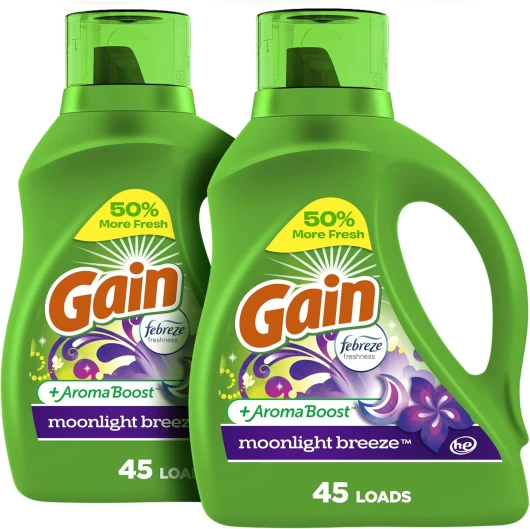
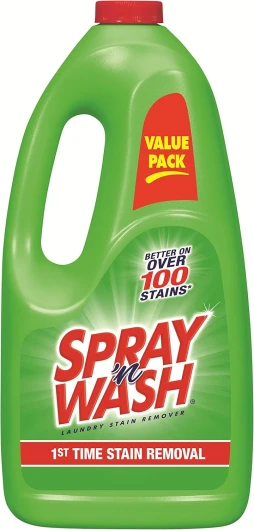
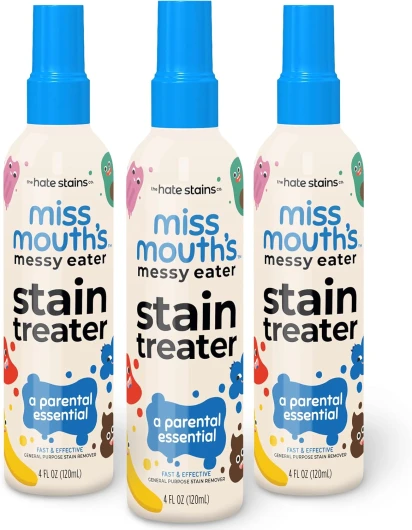
-large-full.webp)


